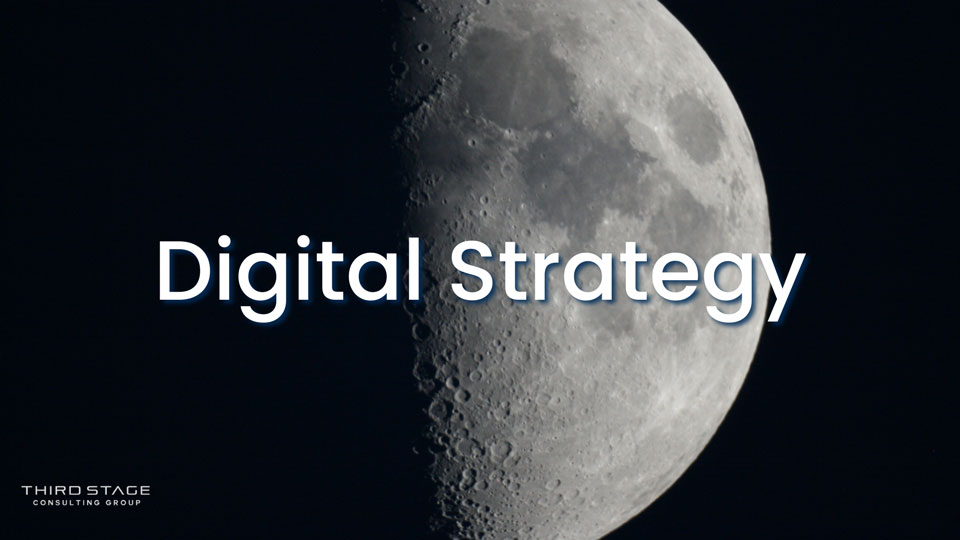Digital strategy has rapidly evolved into an essential component of organizational success, shaping how businesses approach and manage technology-driven change. A comprehensive digital strategy serves as the foundation for successful digital transformation, ensuring clarity, alignment, and realism throughout the process.
In this article, we explore the core components of digital strategy, detailing the critical pillars and best practices essential for businesses looking to achieve long-term transformational success.
Digital Strategy: The Core Pillars
Table of Contents
Toggle1. Understanding Digital Transformation
Digital transformation is not merely about implementing new technology. It represents a significant shift in how organizations operate, emphasizing improvements in efficiency, productivity, and customer experiences. A true digital transformation requires businesses to rethink their traditional operational models, adapt their organizational structures, and embrace new ways of working that fully utilize technological advancements.
2. Balance, Alignment, and Realism (BAR)
Successful digital strategies incorporate three fundamental outcomes known as BAR:
- Balance: Achieving a balance between technology, processes, and people is critical. Organizations often mistakenly prioritize technology over human elements, leading to failed transformations. A balanced approach ensures sustainable change by equally emphasizing the human and operational aspects alongside technology.
- Alignment: Ensuring digital initiatives align closely with broader corporate strategies and goals is critical. Misalignment can lead to confusion, wasted resources, and fragmented implementation efforts. Effective alignment ensures everyone, from executives to frontline staff, shares a unified vision.
- Realism: Realistic planning and goal-setting are crucial to avoid overambitious expectations. Digital transformation projects frequently face challenges due to overly optimistic timelines and budgets. Establishing achievable goals and realistic expectations from the outset prevents costly adjustments later in the process.
3. Business Process Management
Effective digital strategies must include a clear approach to business process management:
- Current-State Assessment: Thorough documentation and analysis of existing processes to identify inefficiencies, bottlenecks, and areas for improvement.
- Future-State Process Design: Clearly define and optimize future processes to fully leverage new technological capabilities and enhance overall operational effectiveness.
- Process Improvement Initiatives: Develop actionable plans to implement identified improvements, either incrementally or through a comprehensive overhaul, supporting the broader transformation objectives.
3. Organizational Change Management
Change management is integral to digital strategy, preparing employees for the significant shifts associated with transformation:
- Organizational Assessment: Evaluate current organizational culture, readiness for change, strengths, weaknesses, and potential resistance points.
- Impact Analysis: Assess who within the organization will be most affected, determining changes in roles, responsibilities, and required skills.
- Strategic Change Plan: Formulate detailed plans to manage change, ensuring clear communication, ongoing training, and continuous employee engagement throughout the transformation process.
3. Enterprise Applications and Technology
Selecting and deploying the right technology is critical:
- Evaluation of Options: Analyze potential technology solutions, including ERP systems, best-of-breed applications, and custom-developed platforms, considering their respective strengths, limitations, implementation costs, and risks.
- Technology Roadmap: Outline clear implementation steps, realistic timelines, budgets, risk assessments, and milestones to guide smooth project execution.
3. Solution Architecture
Effective solution architecture ensures that new technology integrates seamlessly:
- Integration Planning: Determine how new systems will connect with existing infrastructure, addressing data flow, compatibility, and interoperability.
- Data Management Strategy: Create strategies for managing data migration, integrity, compliance, and security throughout the transformation.
- Skill Assessment and Training: Evaluate existing IT infrastructure and personnel skills, identify gaps, and outline plans to fill these gaps through targeted training, hiring, or partnerships.
4. Business Intelligence and Analytics
Strong analytics capabilities are central to modern digital strategies:
- Requirements Assessment: Clearly define current and future data analytics needs, identifying reports, dashboards, and predictive analytics capabilities required for informed decision-making.
- Analytics Roadmap: Develop actionable strategies to harness predictive modeling, AI, and advanced analytical tools, ensuring organizations capitalize fully on their data assets.
5. Project Quality Assurance
Quality assurance and governance are critical for a successful digital transformation:
- Governance Structures: Clearly define accountability frameworks and decision-making structures.
- Risk Management: Proactively identify potential project risks, creating plans to mitigate these risks effectively.
- Quality Control Processes: Regularly audit and review project activities to maintain alignment with strategic goals, manage costs, and ensure project quality throughout the transformation.
In conclusion, a well-crafted digital strategy is not solely about technology—it involves a strategic blend of business processes, organizational readiness, realistic planning, strong governance, and clear alignment across all organizational levels. Organizations that master these elements will not only succeed in their digital transformations but also set themselves up for sustainable long-term success.






